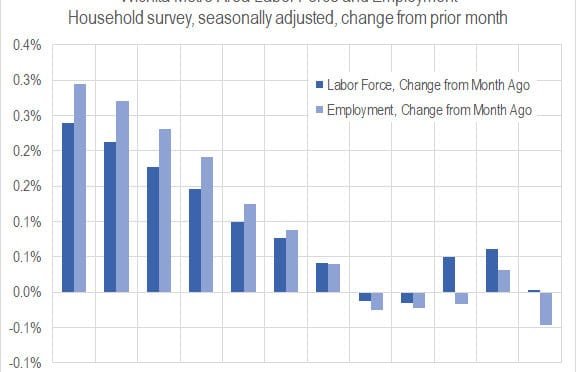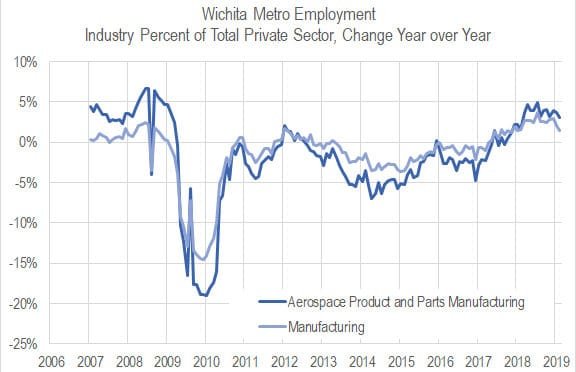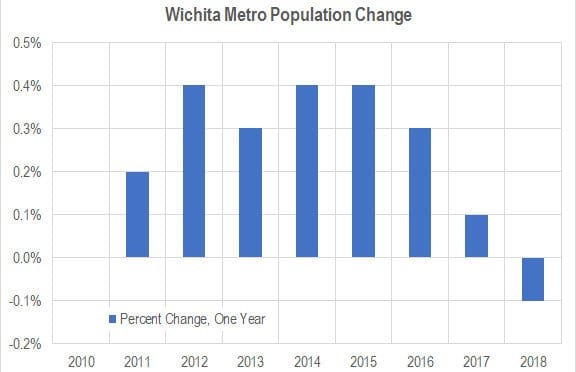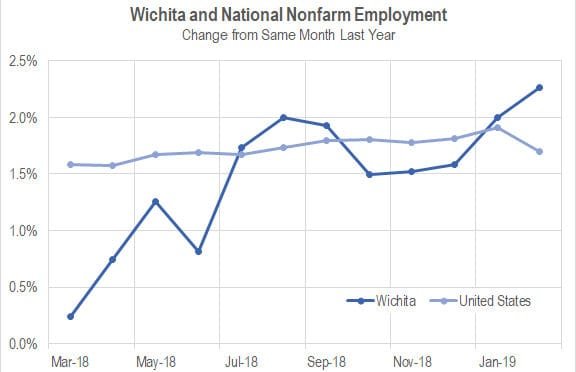For the Wichita metropolitan area in March 2019, jobs are up, the labor force is up, and the unemployment rate is unchanged when compared to the same month one year ago. Seasonal data shows a small decline in jobs from February.
Data released today by the Bureau of Labor Statistics, part of the United States Department of Labor, shows an improving, but also mixed, employment situation for the Wichita Metropolitan Statistical Area.
Click charts and tables for larger versions.
Total nonfarm employment rose from 296,000 last March to 300,700 this March. That’s an increase of 4,700 jobs, or 1.6 percent. (This data is not seasonally adjusted, so month-to-month comparisons are not valid.) For the same period, jobs in the nation grew by 1.7 percent.
The unemployment rate in March 2019 was 3.9 percent, the same as one year ago.
Considering seasonally adjusted data from the household survey, the labor force rose by persons (0.0 percent) in March 2019 from February 2019, the number of unemployed persons rose by 149 (1.3 percent), and the unemployment rate rose from 3.7 percent to 3.8 percent. The number of employed persons not working on farms fell to 299,597 in March from 299,738 the prior month, a decline of 141 persons, or 0.0 percent.
The following chart of the monthly change in labor force and employment shows a general decline over the past year, with some recent months of losses for both measures.
The following chart of changes from the same month one year ago shows recent declines in the rate of growth.
Looking at the charts of changes in employment year-over-year, we see some months in the past year where Wichita outperformed the nation. That last happened in 2012.
















































